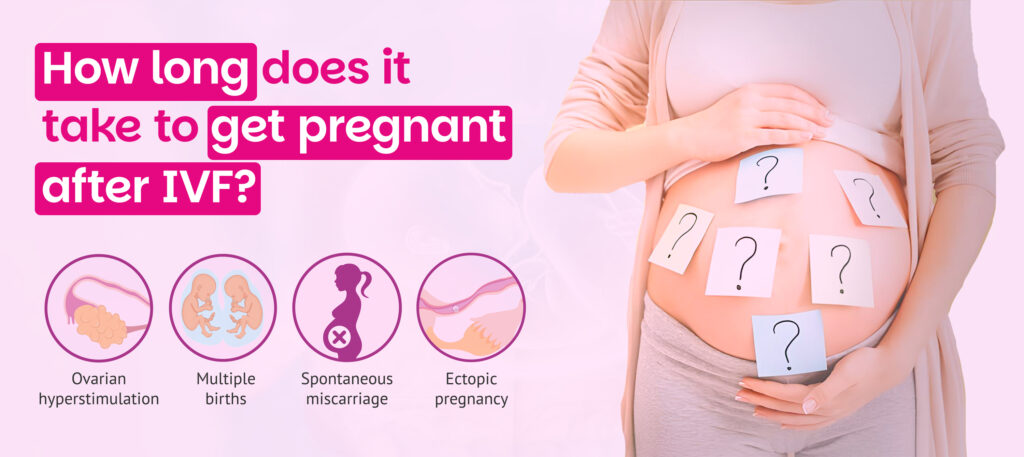When couples decide to pursue In Vitro Fertilisation (IVF), one of the most pressing questions is:
“How long does it take to get pregnant after IVF?”
The answer isn’t the same for everyone. While some women get a positive pregnancy test within two weeks of embryo transfer, others may need multiple cycles before success.
This guide explains the IVF pregnancy timeline, influencing factors, success rates, and expert tips so you know exactly what to expect.
IVF Timeline: From Embryo Transfer to Pregnancy
Here’s a step-by-step breakdown of how long it takes to know if IVF has worked:
- Embryo Transfer Day
- Healthy embryos (fresh or frozen) are transferred into the uterus.
- Usually done 3–5 days after egg retrieval (fresh cycle) or in a planned cycle (frozen transfer).
- The 2-Week Wait
- After transfer, it takes about 9–14 days for implantation to occur.
- This is often the most emotionally challenging part.
- Pregnancy Test (Beta-hCG)
- A blood test is done around 12–14 days post-transfer.
- This confirms whether the embryo has implanted successfully.
- Ultrasound Confirmation
- At around 6–7 weeks of pregnancy, an ultrasound is performed to detect the gestational sac and heartbeat.
So, it usually takes 2–3 weeks after embryo transfer to know if you’re pregnant.
How Long Does It Take to Achieve Pregnancy with IVF?
While the medical test comes quickly, achieving a successful live birth may take multiple IVF cycles.
- First Cycle: Approximately 30–40% of women under 35 experience conception.
- Within 3 Cycles: Success rates rise to 65–70%.
- By 6 Cycles: Cumulative success may reach 80–85% in younger women.
For women over 40, more cycles may be required due to reduced egg quality.
Factors That Affect IVF Pregnancy Timelines
Several factors influence how quickly you can get pregnant after IVF:
- Female age (egg quality declines after 35).
- Embryo quality (chromosomally regular embryos implant faster).
- Uterine receptivity (healthy endometrium is key).
- Type of transfer (fresh vs frozen embryos).
- Lifestyle choices (diet, smoking, alcohol, stress).
- Underlying fertility conditions (endometriosis, PCOS, low ovarian reserve).
Success Rates by Age (India Data)
- Under 35 years: 40–50% success per cycle.
- 35–37 years: 30–35%.
- 38–40 years: 15–20%.
- Over 40 years: 5–10%.
In India, clinics like Vrinda Fertility, report better outcomes with advanced techniques like ICSI, PGT, and frozen embryo transfer.
How to Improve Chances of Getting Pregnant After IVF
To boost implantation and pregnancy success:
- Follow your doctor’s medication schedule strictly.
- Maintain a healthy BMI with a balanced diet.
- Take prescribed folic acid and supplements.
- Avoid smoking, alcohol, and caffeine.
- Manage stress with yoga, meditation, or counselling.
- Rest after embryo transfer (but light activities are fine).
Conclusion
So, how long does it take to get pregnant after IVF?
- You’ll usually know within 2 weeks of embryo transfer.
- However, achieving a live birth may require more than one cycle, depending on factors such as age, health, and embryo quality.
At Vrinda Fertility, our fertility experts utilise advanced protocols to reduce IVF timelines and maximise success rates. With the proper care, your dream of parenthood can become a reality sooner than you think.



